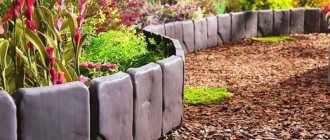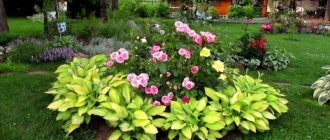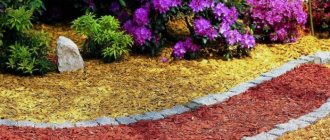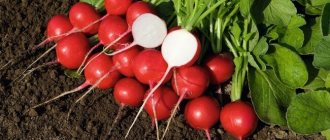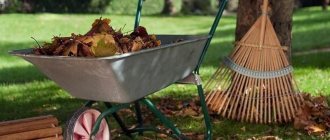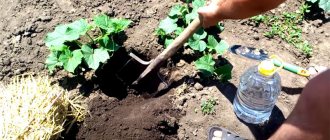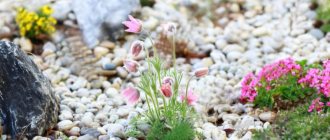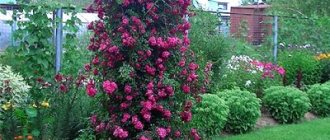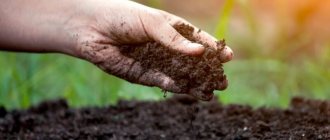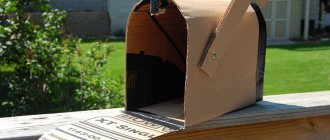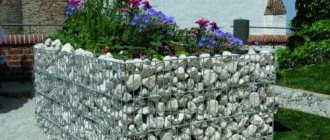In the modern world, the biggest shortage may soon be water. This is influenced either by global warming or global cooling - the opinions of ecologists, climatologists, weather forecasters and other specialists are so different that we do not yet know the exact cause of the water shortage. But, looking at the bills for water supply, every time we are convinced that water is a very expensive pleasure. And for a vegetable garden or garden you always need a lot of water. So, make your own mulch.
Unfortunately, there is no rainy season in our regions. Only in early spring does so much precipitation fall that plants, both cultivated and wild, are able to grow a lot of green mass. And the rest of the time we give our lily tomatoes water drop by drop - it’s not for nothing that drip irrigation was invented, and then we loosen the soil to prevent the precious moisture from evaporating. But some gardeners do not stop at one drip irrigation. They cover the soil above the roots of the plants with a blanket - not cotton or wool, but mulch.
What is mulch
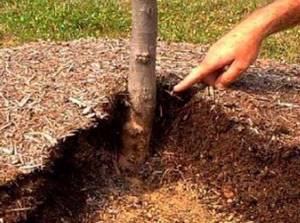
A layer of plants, green or already dried, paper, newspapers, cardboard (cut into pieces or whole), a layer of sawdust, wood chips, tree bark, pine needles, crushed stone, sand, stones - these are all those materials that, after laying them on the soil with roots living plants become mulch. Mulch is a general concept that refers to a loose covering of soil that protects the earth from the scorching sun, from weathering and erosion, from overheating and freezing.
What does it give
So that farming on their plots would not be unprofitable, so that there would be no need for frequent watering, weeding, and loosening the soil, gardeners began to use agrotechnical methods of ecological farming in their practice. Nutrients are supplied to plants in the form of organic matter from rotted mulch, green manure, and rotted compost. That is, mulch does not just protect the earth - it gives strength to the plants growing on it.
Mulching (covering) the soil with organic matter or other materials helps prevent the formation of soil crust, prevents weeds from germinating, and protects the soil from drying out. When plant residues are used as mulch, when they decompose, carbon dioxide is released. The presence of CO2 in the ground layer accelerates the photosynthesis of plants, thereby increasing their viability. Mulching with hard natural materials (stones, pebbles, crushed stone) allows moisture to condense on cold stones at sunrise when the air heats up - thus dry watering of plants is carried out.
Kinds

Mulch is divided into organic and inorganic. Organic mulch includes grass clippings, weeds, green manure, sawdust, pine litter, cereal straw, nut shells, compost, hay, humus, peat, and fallen leaves. Inorganic mulch can be sand, stones, crushed stone, gravel, pebbles, cut paper and cardboard, newspapers, non-woven materials, plastic, pieces of rubber.
Buy or make it yourself?
If you have a woodworking machine or shredder at home, you can easily prepare the wood chips yourself and paint them the desired color. The material can be prepared in the required size (the sawdust fractions are large, medium and small). To paint it the desired color, you will need:
- large container;
- stain and paint of the desired shade diluted in water;
- a platform where the finished material will dry.
For coloring, you can purchase colors or use improvised means. For example, brown color can be obtained from a decoction of onion peels. True, a lot of such dye will be needed to tint the required amount of wood waste. They need to be constantly mixed in a basin so that the color falls evenly on all particles. The purple color can be obtained from beet tea or by adding manganese. The emerald hue will be given by the usual brilliant green, which is in every first aid kit.
You can purchase ready-made “organic mosaics” in the store. The production of this raw material occurs in several stages using special machines. First, small particles are sifted out, then the wood is chopped to a given size and sifted again. As a result, all the pieces come out to the same fractions. They are not sharp and absolutely safe. You can't get hurt by holding them in your hand.
On an industrial scale, mulch is painted using special equipment. Sawdust can be given any shade: blue, red, yellow, green, etc. after which they are dried and packaged into briquettes.
Decorative decorations for flower beds, beds and meadows can be made not only from wood. Stones, sand, straw, pine cone shells, husks, gravel, pebbles, crushed stone, shells and much more can be used for mulching. Everything except straw, shells and husks are inorganic mulches. Its difference from organic is that it does not rot and is more durable. The most unusual types of decorations for lawns and gardens include crushed multi-colored eggshells, whole nut shells, crushed cardboard and paper, and even seaweed. It all depends only on the goals and imagination of the gardener-designer.
Decorative chips are made from wood and used for garden decoration. You can see the use of such a decorative element in the photo. It is a safe, soft and at the same time quite environmentally friendly material, with which both designers and ordinary gardeners and summer residents decorate their decorative elements. To effectively use decorative wood chips in garden landscape design, you just need to have good imagination and excellent taste.
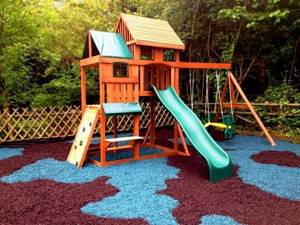
With your own hands
The best time to mulch beds with vegetable crops is in the spring after planting the seedlings in their permanent growing location. Mulching is carried out after moistening the soil, loosening the soil, removing weeds, and carrying out the necessary root feeding. Spring mulching has the main goal of protecting plant roots from drying out in the heat. Watering in mulched areas should be plentiful so that water can penetrate into the lower layers of the soil through the layer of mulching material.

When the lower layers of mulch decompose, soil microorganisms are stimulated, which allows plant roots to effectively absorb nutrients. In the future, mulch will protect ripening fruits from direct contact with the soil and possible putrefactive processes. This is especially important for plants creeping along the ground - cucumbers, pumpkins, zucchini, strawberries.
It should be remembered that organic mulch is a good hiding place for moles and mice. In addition, slugs can breed under leaf or paper mulch in damp soil. Therefore, along with mulching, it is necessary to take measures to destroy rodents and pests. The soil under the mulch will gradually become saturated with earthworms and insects, which in turn will attract birds. That is, if corn or sunflowers grow on the site, you will have to install scarecrows or rattles to scare them away.
Application in landscape design
Mulch reliably protects the soil from exposure to UV rays.
Wood mulch is appreciated by landscape designers, because with the help of such a bright element you can decorate:
- Flower beds and flower beds, even from different plants growing on the site, you can create a single composition. Multi-colored backfill will help reduce contrast and make smooth transitions.
- Colored wood chips will add color to winter gardens and dilute green shades. You can line artificial mini-reservoirs with wood chips.
- Children's playgrounds - colorful colors will delight children, and the softness of the wood chips reduces injuries.
- Jogging paths and park paths, so after precipitation there will be no puddles left. For runners, the woodchip layer provides excellent cushioning.
- Beach areas on the shores of reservoirs.
- Individual plants: trees, shrubs or potted flowers. This way you can place color accents in the room and complement the visual picture.
From pine needles

Spruce and pine needles and cones, cedar, fir, and juniper needles are used as coniferous mulch. Coniferous tree mulch does not compact the soil, lies in even layers on the beds, is not blown away by the wind, and slugs and snails do not live in it. Coniferous trees have strong bactericidal properties, so plants mulched with needles get sick less and improve their growth.
When using pine needles as a mulching material for winter cover of beds, rotted manure or leaf litter is placed under it. This protects the ground not only from frost, but also from rodent burrows. Coniferous litter acidifies the soil, so it is not used for plants that prefer alkaline soil - cabbage, peppers, parsnips, celery, beets, asparagus, tulips. And raspberries, cranberries, sorrel, spinach, tomatoes, potatoes when mulched with pine needles will respond with high yields.

In order for coniferous mulch to be used for various plants, it is first kept in a compost heap.
How to make mulch with your own hands
In most cases, preparing mulch is not difficult. The plant material from which it can be made can be found in almost every area.
From pine needles
You can collect fallen pine needles in the forest and make an excellent mulch from it, which is loose and does not rot for a long time. It has an advantage over other plant material: due to the phytoncides contained in the needles, mulch prevents pathogens and pests from developing in it, and stops the movement of slugs. Needles can be poured onto the beds both in spring and autumn, but should be changed every year. The layer thickness is on average 5 cm.
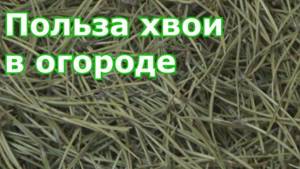
fallen leaves
Foliage is easy to collect from under garden trees and shrubs in the fall if they are dry. But they can be used as a covering material only if the trees do not suffer from any infectious diseases and there are no pests on them. If you had to fight diseases or pests this season, it is better to burn the foliage. Lay the foliage on the beds in a layer of 10 cm, at first you need to make sure that the wind does not blow it off the ground. If the leaves are laid down for the winter, they need to be removed in the spring and replaced with new material, and the same should be done in the fall.
See also
Instructions for use and composition of the Nutrivant fertilizer, dosage and analoguesRead
Hay and straw
Straw or hay is also considered an excellent organic material for covering beds. The use of straw has a peculiarity: it absorbs nitrogen, so during feeding you need to slightly increase the dosage of nitrogen fertilizers. Straw can be found in fields after crops have been cut or purchased.
There are also requirements for the quality of hay: if it is made from grass that has already flowered and formed seeds, then it cannot be used, there is a risk that the seeds will sprout and weeds will grow in the beds, which will then have to be dealt with. If the hay is made from young grass, there is no such danger.
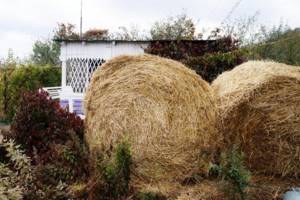
When using such mulch, you need to ensure that it does not harbor pests and rodents that like to live in straw or hay.
Weeds
Weeds after weeding and tops of garden crops can be dried and dry hay can be used as mulching material. As in the previous case, only young plants that do not have ripe seeds are allowed for use.
Sawdust
You can use sawdust left after processing wood of any tree species except coniferous ones. As in the case of straw, fresh sawdust is not desirable, since when it rots, it also takes nitrogen from the soil. It is recommended to use partially rotted ones or to apply an increased dose of nitrogen fertilizers when feeding plants.
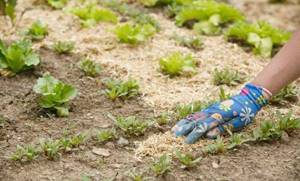
wood chips
Small chips and crushed bark with similar properties are also used as covering and decorative material. Wood chips are sprinkled around the trunks of trees and shrubs, especially conifers, and they line the ground near paths and flower beds.
Expert opinion
Zarechny Maxim Valerievich
Agronomist with 12 years of experience. Our best country expert.
Ask a Question
You can buy wood chips in grocery stores. It is also permissible to prepare wood chips yourself; fruit or deciduous trees are suitable as raw materials; it is not advisable to use coniferous trees.
Paper and cardboard
Small pieces of paper or thin cardboard can be used to mulch vegetable beds. The paper needs to be shredded, wetted and laid in a layer on the soil. To prevent it from being blown away by the wind, sprinkle humus or sand on top.
See also
Instructions for using fertilizer for conifers Green Needle and dosageRead
If you use dark-colored wrapping paper rather than light, you can get not only a covering material, but also a material that warms the earth. In the spring, under such mulch, the soil will warm up faster; seedlings can be planted in warm soil or seeds can be sown earlier than usual.
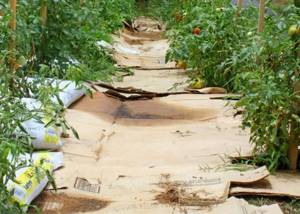
Peat
Lowland peat can be used to mulch garden beds. The material is well suited for covering beds before winter and at the beginning of the gardening season. In addition, peat is also a fertilizer; it loosens the soil and makes it softer, air- and moisture-permeable. Not only fresh wet peat, but also old dry peat can be used as mulch.
From fallen leaves
To mulch the soil, use fallen leaves of garden trees, birch, linden, maple, poplar, chestnut and other ornamental trees. Leaves are collected in ecologically clean areas, away from roads and industrial enterprises. To obtain mulch for spring covering of beds, leaves are left in high piles in the fall or placed in compost pits.

In order to cover the beds with leaves in the fall, large-leaved tree species are used. The foliage of nuts is considered the most useful. Oak leaves contain tannins, so they are not used for mulching garden crops. Leaves in the fall cover root crops left in the ground, bushes of berry plants, and tree trunks.
Mulching with grass clippings
The mown grass must be chopped and dried, only after that it is used in the beds. Fresh grass lies on the ground in a dense layer, so it easily rots and does not allow moisture and air to pass through easily. Place mulch around the plants in row spacing in a layer of 5 to 7-10 cm. The root zone is left without mulch.
It is advisable to mulch with grass in the spring after the soil has warmed up, so as not to slow down the growth of plants. In the southern regions, grass mulching is carried out before plants are planted in the soil; in cold areas, seedlings are first planted and allowed to take root, and then the soil is covered with grass.
Read how to choose a lawn mower for mulch HERE
Mulching functions
Mulch laid on the beds retains soil moisture evaporating from their surface, reduces the rate of drying out and prevents the formation of a crust. This allows you to reduce the amount of watering and loosening. This property of mulch becomes especially useful in southern regions, where summers can often be hot and dry. A layer of mulch protects the soil and plants not only from heat, but also from cold, during frosts, long periods of cold weather or temperature changes.
Thanks to the dense layer, under which the sun's rays do not penetrate, there is no need for weeding, since the growth of weeds stops. Mulch does not allow light to pass through, but it does allow air to pass through to the roots of the plants. Thus, the use of mulch makes it much easier to grow plants in your home garden. After about six months of presence in the beds, the mulch rots and becomes an excellent natural fertilizer.
From the weeds
In order not to be afraid that weeds will begin to sprout in the soil, several conditions must be met:
- there should be no seed primordia on the weeds, since some seeds can ripen on picked plants;
- There should be no soil on the roots of plants so that they do not become fixed in a new place.

For mulch, do not use weeds with creeping roots - wheatgrass, grass. To mulch the soil with such plants, only their above-ground parts are used. You can mulch the soil with quinoa, dandelions, chamomile, comfrey, shepherd's purse, plantain, sow thistle, horsetail, rapeseed, fern, and yarrow.
Mulching with straw
Straw does not have to be brought or purchased. It can be obtained by growing cereal green manure on your own plot - rye, oats, barley. Straw is used in beds with potatoes, tomatoes, cucumbers, zucchini, and it is used to protect the soil under raspberries and gooseberries. Moisture is retained very well under the straw and there are practically no weeds. At the same time, it does not cake, there is good gas exchange and sufficient penetration of water during irrigation or rain.
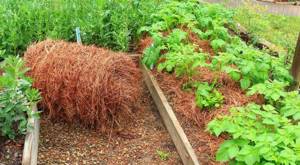
Features of soil mulching
Natural organic mulching materials can be found in every area. It is available, cheap and always at hand. But there are some nuances that you need to pay attention to when using natural mulch.
Thus, it is not recommended to use fresh pine needles - it is believed that they acidify the soil. You should not use foliage collected from the forest or from under your own trees if there is a possibility that pathogens or pests remain on them.
It is not recommended to use high-moor peat; it also acidifies the soil. Newsprint is not suitable for mulching due to printing ink, which contains toxic substances. They poison the soil and plants. You can only use blank paper, without any printing or design.
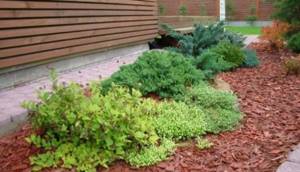
The layer of mulch from any material should not be less than 5 cm in spring and 10-15 cm in autumn. The lighter the raw material, the thicker the layer needs to be made. Autumn mulch should warm the soil and plant roots well in winter, so the layer needs to be thicker. In the spring, such mulch is usually replaced and burned. Ash can be used as fertilizer.
Plant material that can be collected on your own site is perfect for mulching home beds. This is hay, weeds and fallen leaves. They lay perfectly on the ground, serve not only as covering, but also as insulating material, and then as organic fertilizer. Sawdust and wood chips can be bought, and pine needles can be collected in the forest. All types of organic mulch are cheap, readily available, and not harmful to plants or soil. Using mulch in the garden can significantly facilitate the work of the gardener, minimize plant care, and increase productivity.
From wood chips and bark
Decorative mulch made from wood chips and bark, painted with natural dyes in various shades, is used not only as a protective and nutritious material, but also as a decoration for garden flower beds and front gardens. Tree trunks and paths in the garden look very presentable if covered with multi-colored natural materials. After some time, the wood chips turn into compost, so a new mulch is carried out, replacing the old layer or simply pouring a new layer of mulch on top. It should be remembered that the bark of some trees acidifies the soil.

Read how to choose a garden grass and branch shredder HERE
Mulch production
The latest technology is used to produce mulch. The raw material is the bark of deciduous trees. To obtain sawdust , the surface of the wood is first treated and then cleaned of small fractions.
The secondary stage is necessary to grind the raw material to the desired fraction. At the end it is sifted again. In order to give it a certain color range during the production of wood chips, a special installation is used, which is called a colorizer. At the last stage, the material is dried and packaged in bags. It is used not only as mulch , but also for decorating flower beds and children's playgrounds, because it is characterized by safety and reliability.
Bark chips are also often used for walking or sports paths. This coating remains clean even after heavy rains and retains its bright colors.
Which one is best for strawberries?
Straw for spring and summer mulching of strawberries is used in dry form, so it takes a long time to decompose and cannot serve as a source of nutrition for strawberry bushes. To provide strawberries with the necessary minerals, straw is mixed with compost or rotted manure. The thickness of the straw mulch layer depends on the structure of the soil on which the beds are covered.

For loose soils, the optimal thickness of straw will be 15-20 cm. This height of mulch will not last long; after a few days the thickness will decrease to 5-7 cm. On clay soils, cut straw is used, which is laid in a thin layer, no more than 5 cm. This mulch is updated every 15-20 days.
For new strawberry beds, spunbond agrotextiles are used as mulching material. Seedlings are planted in slots in spunbond. The edges of the covering material are secured with heavy objects or pins. Spunbond has a long service life - up to 3 years, it does not rot, and is resistant to atmospheric influences.
Production of decorative chips
Wood raw materials (hardwood) are the basis. The production base includes modern equipment and the latest technological techniques. The production of decorative chips occurs in several stages.
During primary processing, small particles are eliminated. Then, using a chipper, the material is crushed to the required size and subjected to a second screening. The output is fractions of approximately the same size, they are safe, and you cannot get hurt from them. The resulting products are further painted.
Attention! For coloring, a “colorizer” is used - special equipment into which the prepared material is placed. The color scheme consists of different shades (“golden cypress”, “sapphire”: gold and blue, respectively), each of them is beautiful in its own way.
This stage ends with drying, after which the finished mulch is packaged in transparent packaging.
Return to content
Which one is best for tomatoes?
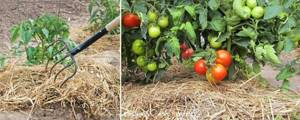
Mulching of tomatoes is carried out immediately after the seedlings take root. The use of cardboard, paper, small husks, and fresh grass is unsuitable for tomatoes. Grass can contain pests and pathogenic viruses. Paper mulch will simply not be enough for tall tomatoes. The fine husk will quickly dry out and scatter under the influence of the wind.
A mixture of rotted sawdust and pine needles will be a good mulch option for tomatoes. This composition will provide not only plant protection, but also their nutrition. To cover the soil in tomato beds, use a mixture of manure and straw, well-dried hay, and humus. All these materials will help the plants receive moisture from the soil and develop well.
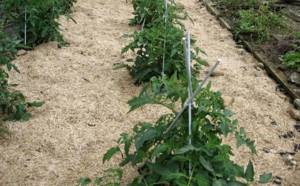
Reviews
I also mulch the soil in my greenhouse, but with a rather unusual material - roofing felt. I lay it down with the powder side up. There are no unpleasant fumes. The beds in my greenhouse are narrow; it’s convenient to work if you cut the material into narrow strips. If necessary, it is always easy to lift it in order to fertilize or water the ground.
Leonid, 65 years old, Zvenigorod
Modern agriculture cannot do without mulching, but once upon a time, simply loosening the soil with a hoe the day after watering was enough to prevent weeds and hardened soil crust. But then we lived in a temperate climate, with rain and cool evenings.
Elizaveta, 59 years old, Kirzhach
Natalia
Author
Ask a Question
Mulching is not only about ensuring that the plant has enough moisture and that the gardener pays less money for water. Mulching with organic matter also reduces the cost of fertilizers and herbicides. The benefits of mulching are becoming increasingly clear. Most likely, the time is about to come when, without mulching and building structures with shading nets stretched over them, it will be impossible to grow garden crops in open ground. You need to be prepared for this. Health to you and your loved ones!
